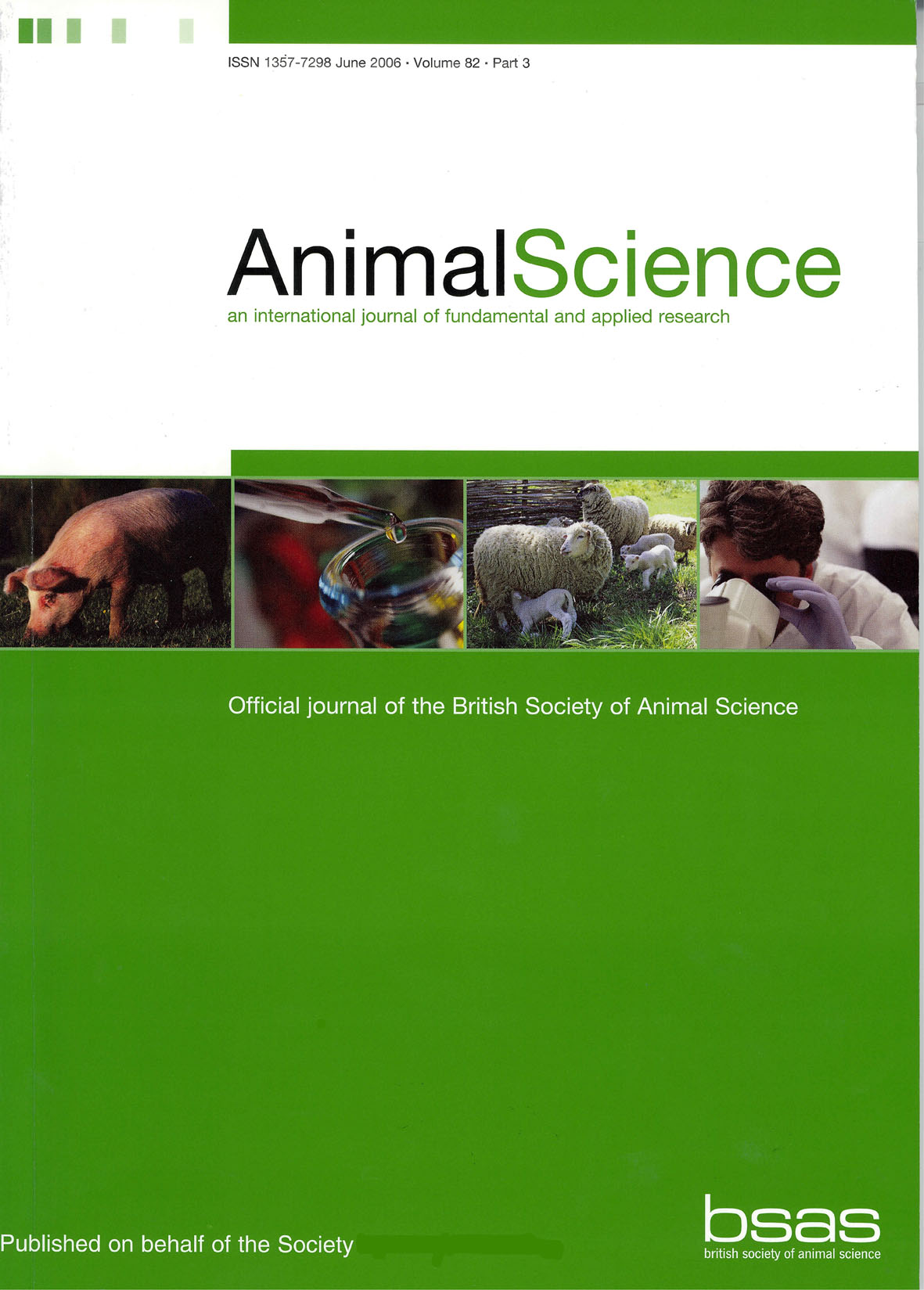Crossref Citations
This article has been cited by the following publications. This list is generated based on data provided by
Crossref.
Kruse, V.
1970.
Absorption of immunoglobulin from colostrum in newborn calves.
Animal Science,
Vol. 12,
Issue. 4,
p.
627.
Kruse, V.
1970.
A note on the estimation by simulation technique of the optimal colostrum dose and feeding time at first feeding after the calf's birth.
Animal Science,
Vol. 12,
Issue. 4,
p.
661.
Bailey, L. F.
and
McLean, D. M.
1972.
IMMUNOGLOBULIN LEVELS IN SOUTH AUSTRALIAN MARKET CALVES.
Australian Veterinary Journal,
Vol. 48,
Issue. 11,
p.
605.
Logan, E.F.
1974.
Colostral Immunity to Colibacillosis in The Neonatal Calf.
British Veterinary Journal,
Vol. 130,
Issue. 5,
p.
405.
Newstead, D. F.
1976.
Carotene and immunoglobulin concentrations in the colostrum and milk of pasture-fed cows.
Journal of Dairy Research,
Vol. 43,
Issue. 2,
p.
229.
Logan, E.F.
1977.
The Influence of Husbandry on Colostrum Yield and Immunoglobulin Concentration in Beef Cows.
British Veterinary Journal,
Vol. 133,
Issue. 2,
p.
120.
Logan, E. F.
1978.
Factors influencing the quantity and quality of colostrum in the cow.
Veterinary Science Communications,
Vol. 2,
Issue. 1,
p.
39.
Boyd, J.W.
and
Hogg, R.A.
1981.
Field investigations on colostrum composition and serum thyroxine, cortisol and immunoglobulin in naturally suckled dairy calves.
Journal of Comparative Pathology,
Vol. 91,
Issue. 2,
p.
193.
Edwards, S. A.
1982.
Factors affecting the time to first suckling in dairy calves.
Animal Science,
Vol. 34,
Issue. 3,
p.
339.
Maidment, D.C.J.
1982.
Changes in Immunoglobulin Levels during Storage of Fermented Bovine Colostrum.
British Veterinary Journal,
Vol. 138,
Issue. 1,
p.
18.
Edwards, S.A.
Broom, D.M.
and
Collis, S.G.
1982.
Factors Affecting Levels of Passive Immunity in Dairy Calves.
British Veterinary Journal,
Vol. 138,
Issue. 3,
p.
233.
Mulla, A. F.
Rickman, L. R.
and
Chembe, E. E.
1986.
The effects of mammalian milk/colostrum uponTrypanosoma brucei rhodesiense.
Annals of Tropical Medicine & Parasitology,
Vol. 80,
Issue. 4,
p.
451.
Rebelatto, Marlon Cezar
and
Weiblen, Rudi
1992.
IMPORTÂNCIA DA IMUNIDADE PASSIVA PARA O TERNEIRO.
Ciência Rural,
Vol. 22,
Issue. 1,
p.
109.
Wawrzkiewicz, K.
and
Wawrzkiewicz, J.
1992.
An inactivated vaccine against ringworm.
Comparative Immunology, Microbiology and Infectious Diseases,
Vol. 15,
Issue. 1,
p.
31.
Shearer, J.
Mohammed, H.O.
Brenneman, J.S.
and
Tran, T.Q.
1992.
Factors associated with concentrations of immunoglobulins in colostrum at the first milking post-calving.
Preventive Veterinary Medicine,
Vol. 14,
Issue. 1-2,
p.
143.
Rowan, T. G.
1992.
Thermoregulation in neonatal ruminants.
BSAP Occasional Publication,
Vol. 15,
Issue. ,
p.
13.
TODD, AG
WHYTE, PBD
and
CARROLL, PD
1993.
A comparison of serum immunoglobulin concentrations in neo‐natal calves fed substitute colostrums.
Australian Veterinary Journal,
Vol. 70,
Issue. 4,
p.
154.
Csapó, J.
Csapó-Kiss, Z.
Martin, T.G.
Szentpeteri, J.
and
Wolf, G.
1994.
Composition of colostrum from goats, ewes and cows producing twins.
International Dairy Journal,
Vol. 4,
Issue. 5,
p.
445.
Machado Neto, R.
Prado, G.V.B.
Bessi, R.
and
Hattnher, F.L.
1995.
Flutuação das proteínas séricas em vacas primíparas e multíparas no período pré-parto.
Scientia Agricola,
Vol. 52,
Issue. 1,
p.
158.
Deem, S.L.
Donachie, P.L.
and
Norval, R.A.I.
1996.
Colostrum from dams living in a heartwater-endemic area influences calfhood immunity to Cowdria ruminantium.
Veterinary Parasitology,
Vol. 61,
Issue. 1-2,
p.
133.

